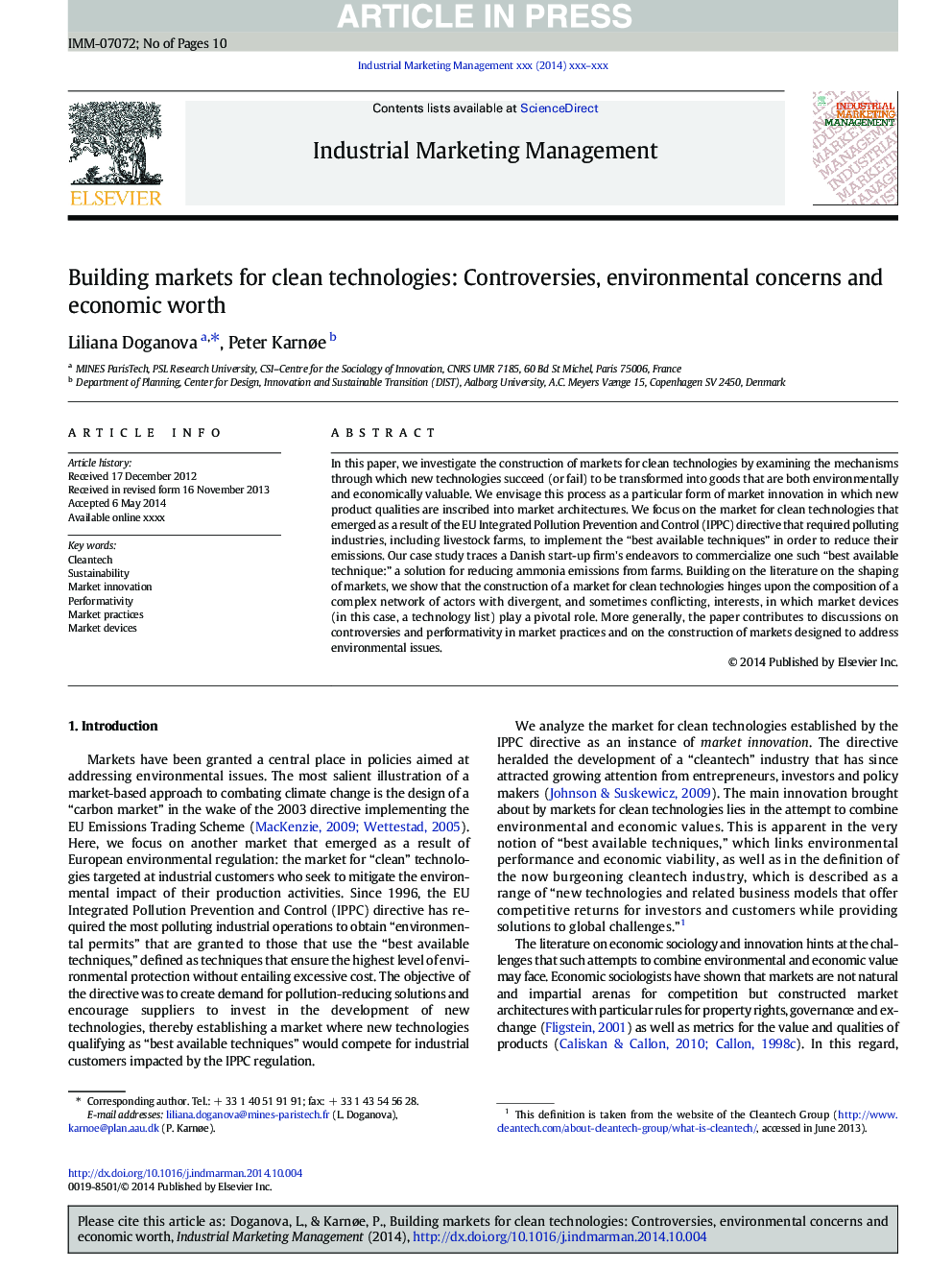| Article ID | Journal | Published Year | Pages | File Type |
|---|---|---|---|---|
| 7433087 | Industrial Marketing Management | 2015 | 10 Pages |
Abstract
In this paper, we investigate the construction of markets for clean technologies by examining the mechanisms through which new technologies succeed (or fail) to be transformed into goods that are both environmentally and economically valuable. We envisage this process as a particular form of market innovation in which new product qualities are inscribed into market architectures. We focus on the market for clean technologies that emerged as a result of the EU Integrated Pollution Prevention and Control (IPPC) directive that required polluting industries, including livestock farms, to implement the “best available techniques” in order to reduce their emissions. Our case study traces a Danish start-up firm's endeavors to commercialize one such “best available technique:” a solution for reducing ammonia emissions from farms. Building on the literature on the shaping of markets, we show that the construction of a market for clean technologies hinges upon the composition of a complex network of actors with divergent, and sometimes conflicting, interests, in which market devices (in this case, a technology list) play a pivotal role. More generally, the paper contributes to discussions on controversies and performativity in market practices and on the construction of markets designed to address environmental issues.
Related Topics
Social Sciences and Humanities
Business, Management and Accounting
Marketing
Authors
Liliana Doganova, Peter Karnøe,
